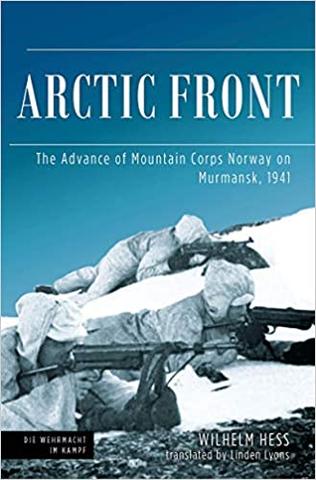Arctic Front

I went from refusing to review books written by former Second World War German officers to...well, here we are with my third such review in the past year. But these books have all been flat out good. Perhaps it is because one is from the former Chief of Staff of Panzer Group Four and now this one is authored by the former quartermaster of Mountain Corps Norway. Such men simply have less reason to deviate from an objective look at military operations and enter into the realm of excuse making. As for the third such book I have looked at of late, though Hermann Hoth has ample reasons to obfuscate, he is intellectually more honest than his peers in command of major operational level formations during the Nazi-Soviet war of 1941-1945. Overall, there is far less deflection of responsbility in all three of these books than one finds in the works of Guderian or Manstein and their ilk (who raise deflecting blame to an art form and often peddle outright disinformation in their writing). In addition, the books I am recommending here contain far more attention to detail.
That last point is important. In this regard Wilhelm Hess, as the author of this book, does the best job of serving up a very thorough analysis as to why and how the combined German-Finnish army deployed within the Arctic Circle ultimately failed in their quest to seize Murmansk during Barbarossa. Perhaps this is because Hess' job as quartermaster required a keen apprecation of and attention to detail. Perhaps that is just his nature. Whatever reason why it most certainly works here.
In Arctic Front Hess covers exactly why geography, terrain, climate, combat conditions, intelligence failures, logistical overreach, transportation issues, enemy resistance, and more all worked together to stymie a German led effort that in retrospect never should have been developed any further than the initial successful drive to secure the Petsamo region (and its valuable nickel mines) during Barbarossa's days. A move that could have been accomplished by the Finns themselves, with only minimal assistance. The precise nature of Hess' analysis is such that the reader cannot put down this book without thinking that OKW/OKH ordered Mountain Corps Norway into an ill considered operation that proved a waste of time. In fact, this borderline elite formation should have been deployed with any one of the three army groups forming the main body of the force Nazi Germany assembled to invade the Soviet Union in June of 1941.
Beyond that however, there is much to recommend in this book that itself is focused squarely on the ground based combat in the Arctic Circle that took place between June and October of 1941 and the corresponding German effort to supply its forces. Hess' illustrations and the maps provided do much to highlight his points. Again, the attention to detail is what I find most compelling. As such, if you have any kind of interest in understanding what it entails to wage warfare in the Arctic Circle or an interest in military logistics - then this book is a must read. Arctic Front also has value to modern officers seeking to glean a better grasp as to what it means to operate in such an environment and why in doing so they will need to make a far bigger commitment than they might ever think would be needed beforehand. I wholeheartedly recommend this book to anyone with an interest in Arctic warfare and/or a desire to learn more about this under-represented aspect of the Second World War.



Post new comment